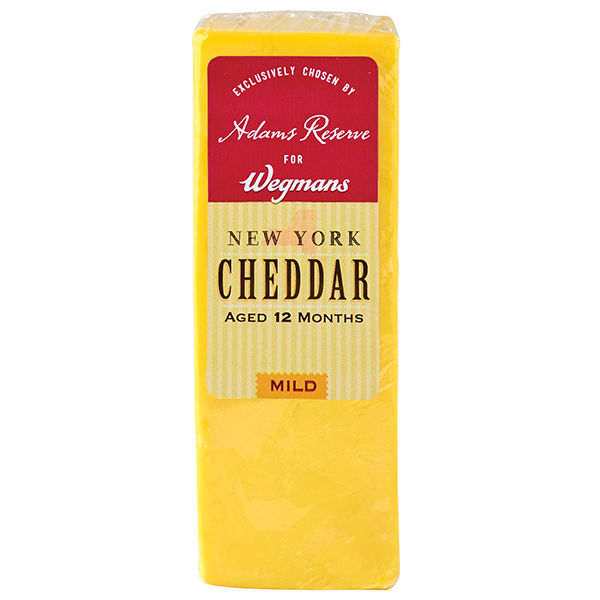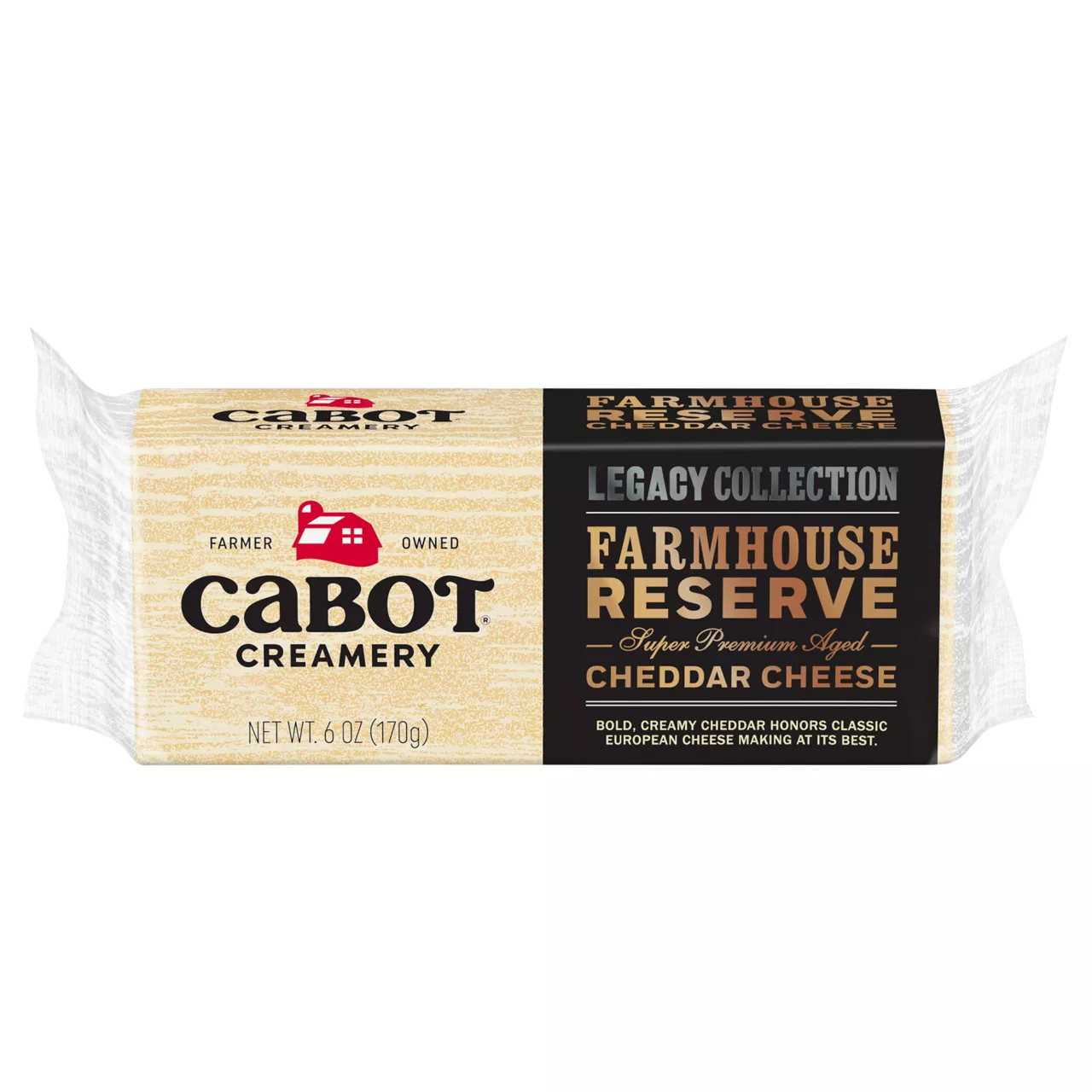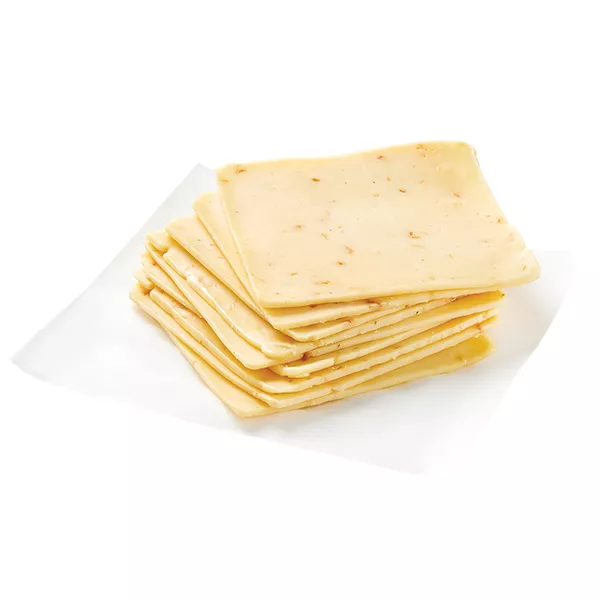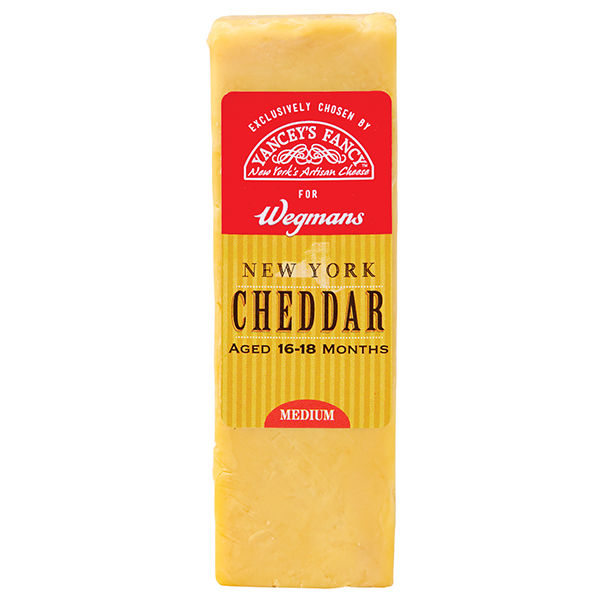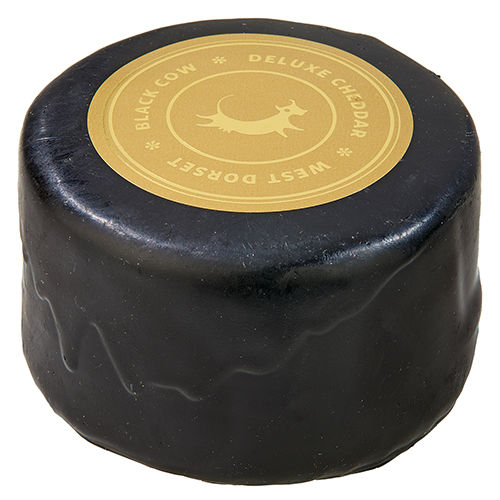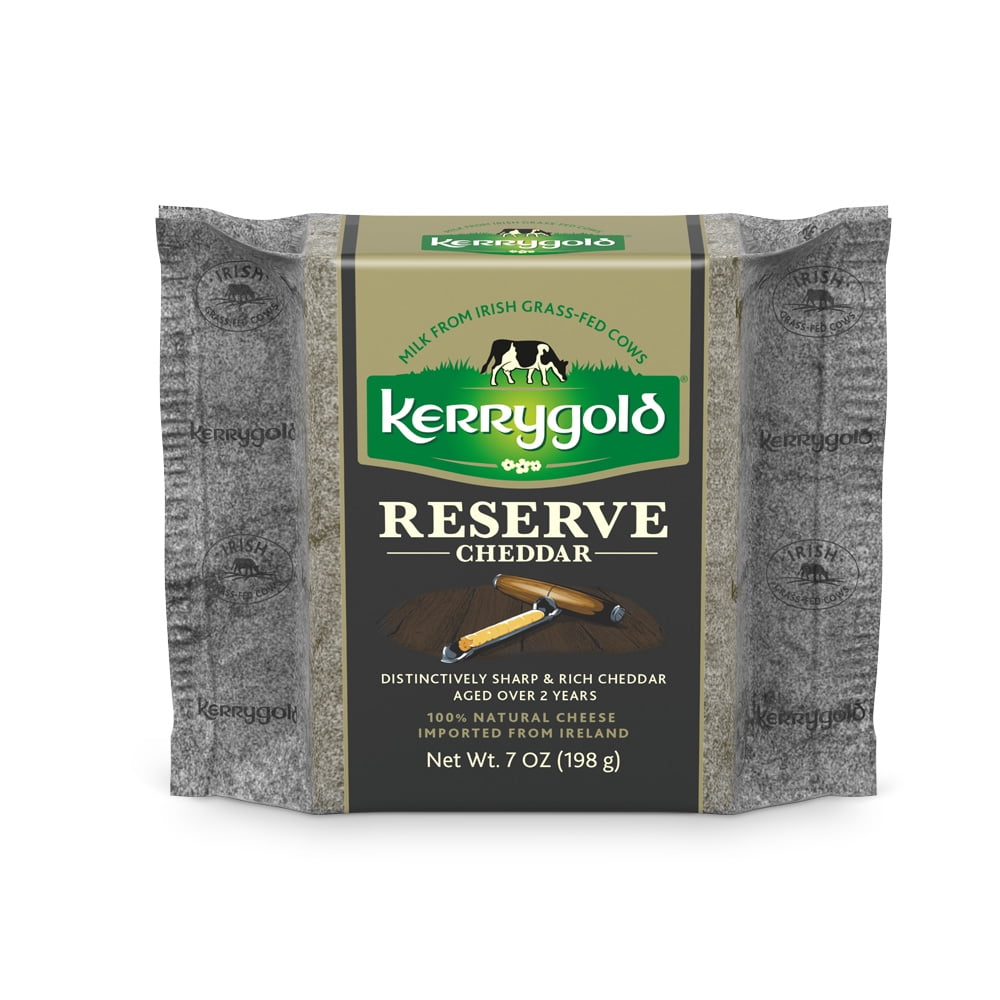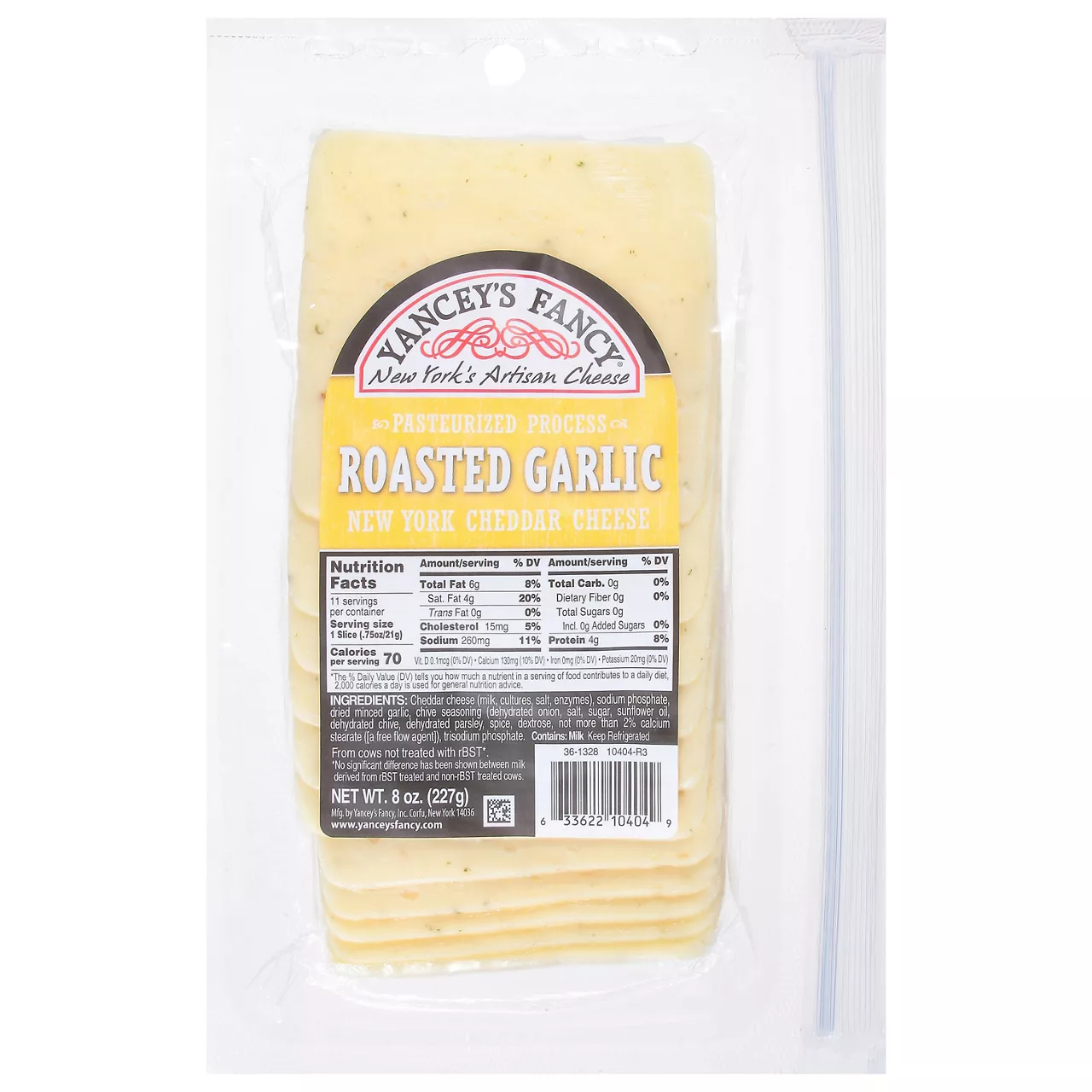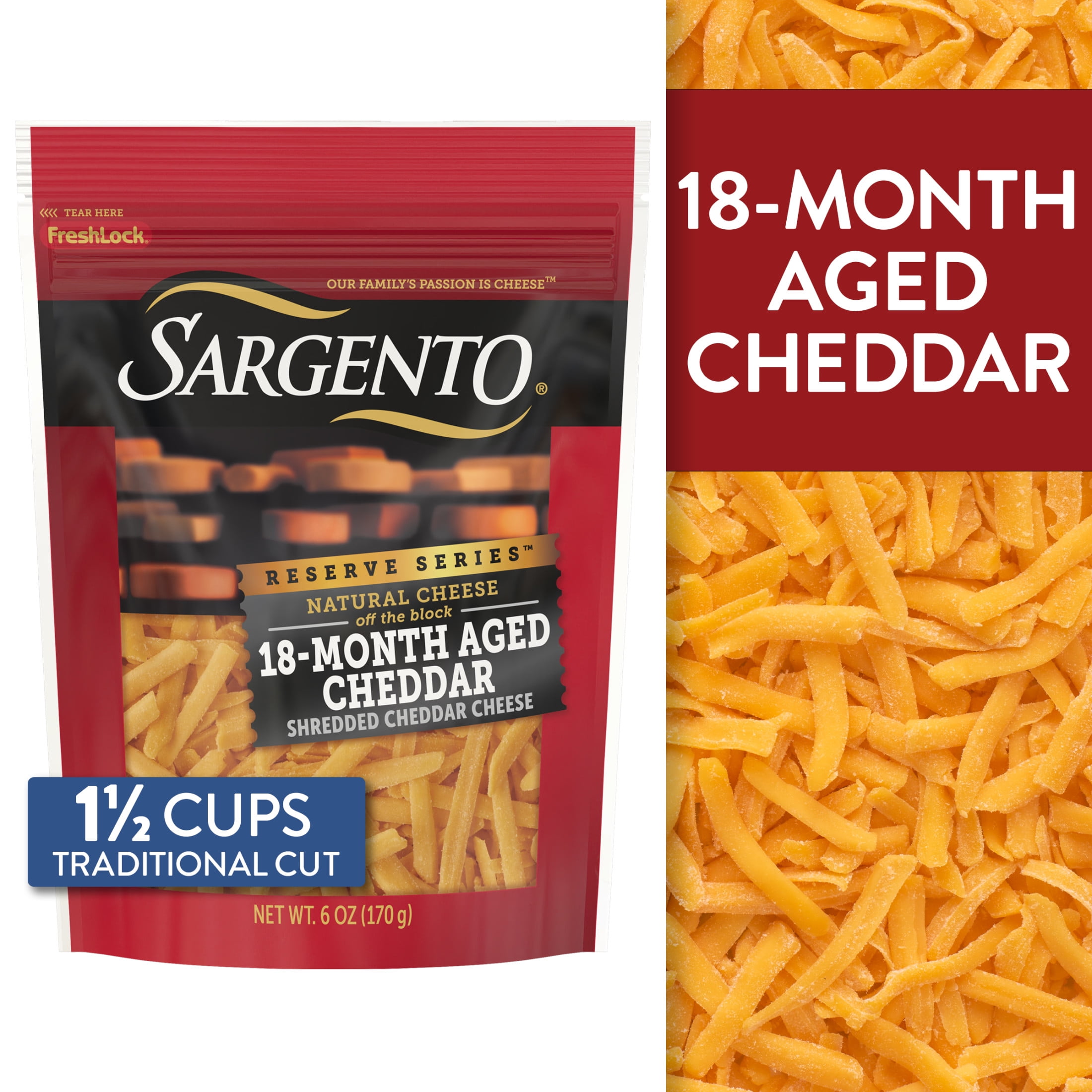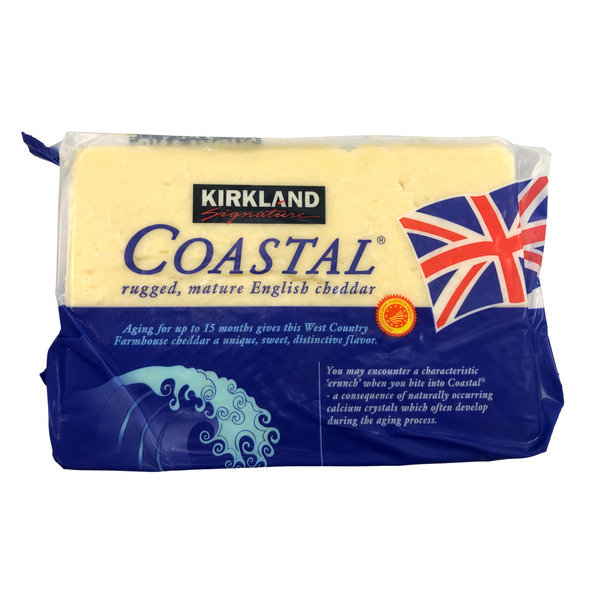Aged Cheddar Cheese
Aged cheddar cheese is a popular variety of hard cheese known for its complex and sharp flavor profile, which is a result of the cheese undergoing a maturation process. Made primarily from cow's milk, cheddar cheese can be aged for varying durations, typically ranging from 12 months up to 5 years or even longer. Longer aging periods lead to a stronger and tangier taste accompanied by a drier, crumbly texture.
This versatile cheese can be incorporated into numerous dishes, enhancing their taste and providing additional depth. Home cooks and consumers can enjoy aged cheddar cheese with crackers, in salads, sandwiches, or melted on top of a burger. Its rich flavor also complements soups and can be used in a variety of baked dishes such as macaroni and cheese, quiche, and cheese scones.
0%
CARBS
59%
FAT
41%
PROTEIN
275 Aged Cheddar Cheese Products
Wegmans 12 Month Aged Orange Cheddar Cheese
Cabot Creamery Legacy Collection Farmhouse Reserve White Cheddar Cheese
Yancey's Fancy Steakhouse Onion Aged Cheddar Cheese
Wegmans 16-18 Month Aged Orange Cheddar Cheese
Somerdale Black Cow Cheddar Truckle Cheese
Kerrygold Grass-Fed Aged Irish Cheddar Cheese
Yancey's Fancy Cheese, Cheddar, New York, Roasted Garlic
Sargento® Reserve Series Shredded Eighteen-Month Aged Natural Cheddar Cheese
Kirkland Signature Coastal Cheddar
Kerrygold Cheese, 100% Natural, Aged Cheddar
Used In 24 Recipes
5
Savory Tomato and Avocado Grilled Cheese Sandwich
5
Sun-Kissed Tomato Basil Soup with Whiskey Cheddar Melts
2
Quick Naan Bread Pizzetta
4
Velvety Cheddar-Spinach Soufflés
8
Classic Croque Monsieur
4
Keto Zucchini Boats with Philly Cheesesteak Stuffing
Classic Spaghetti Bolognese
30
Tuna Fishcakes
Aged Cheddar Cheese Is Frequently Used With
Aged Cheddar Cheese FAQ
Cooking with aged cheddar can sometimes be a challenging task, as its intense flavor and hard texture could overpower the dish if not used properly. The mistake many people make is using too much of it, resulting in a strong, overpowering cheese flavour. Because of its stronger taste compared to younger varieties, it is important to be mindful of the amount used. To get the most out of it, try grating it over dishes just before serving; the heat allows the cheese to melt slightly, releasing its full array of complex flavors. Additionally, you can enhance the flavor of aged cheddar by pairing it with sweet elements like fruit, honey, or jam, and acidic elements like pickles or vinegary condiments, as these can cut through the richness and provide balance to your palate. Although it's loved for its distinct bite, don't hesitate to experiment with different aging periods of cheddar, as each brings a unique flavor profile.
A lesser-known tip for cutting aged cheddar, especially when it's particularly hard and crumbly, is to use a thin, sharp knife and make cuts at room temperature; this minimizes crumbling. Also, while this might seem counter-intuitive, let cheese come to room temperature before serving in any form. It helps in getting the most flavor out of the cheese.
What is the best way to eat aged cheddar?
What can I pair with aged cheddar?
Is aged cheddar good for melting?
How strong is the flavor of aged cheddar?
Does aged cheddar have any health benefits?
Why is aged cheddar cheese crumbly?
Is there lactose in aged cheddar?
Does aged cheddar have a strong smell?
Is aged cheddar naturally gluten free?
Can I use aged cheddar in a fondue?
Expiration & Storage Tips
When does aged cheddar cheese expire?
If unopened, the vacuum-sealed packaging keeps the aged cheddar cheese fresh for months. This can even be up to 6 months or until the 'best by' date printed on the packaging. However, once the package is open, the exposed cheese should ideally be used within 3 to 4 weeks. If kept in the freezer, the cheese can extend its shelf life for up to 6 months. Be aware that freezing may slightly alter the texture of the cheese, making it a bit crumblier once defrosted.
How do you tell if aged cheddar cheese is bad?
Aged cheddar cheese is naturally crumbly and has a strong, distinct aroma. However, if it develops an unusually strong, sour or unpleasant odor, it's likely past its prime. Visually, if you see mold growth (other than the harmless white cheese mold), or spot a slimy or glossy exterior on the cheese block, these are also indicators that the cheese has gone bad. In terms of taste, if the cheese is excessively sour or bitter, it's time to toss it out.
Tips for storing aged cheddar cheese to extend shelf life
• Always keep the cheese in the fridge when not in use to extend its shelf life.
• Wrap the cheese in wax paper or parchment paper before storing in a loose plastic bag. This allows the cheese to breathe while maintaining an optimal humidity level to prevent it from drying out.
• If you see some harmless cheese mold, you can cut about 1 inch around and below the moldy spot and continue to enjoy the cheese while ensuring its safety.
• For freezing, it's best to grate the cheese and store it in airtight bags. This is ideal for usage in cooking and baking, but not recommended for serving cheese platters.
• Remember to defrost the frozen cheese in the refrigerator a day before you plan to use it. Quick defrosting can lead to moisture loss and a crumbly texture.
EXPIRES WITHIN
3 - 5
MONTHS
Equivalents
Substitutes

Shredded Cheddar Cheese

Shredded Sharp Cheddar Cheese

Sliced Cheddar Cheese

Sliced Extra Sharp Cheddar Cheese

Sliced Sharp Cheddar Cheese

White Cheddar Cheese

Shredded White Cheddar Cheese

Sliced White Cheddar Cheese

Extra Sharp Cheddar Cheese

Sharp Cheddar Cheese
See All
Health Info
Macros
0g
CARBS
9g
FAT
7g
PROTEIN
Allowed on these diets
LOW FAT
HIGH CALCIUM
VEGETARIAN
KETO
MEDITERRANEAN
LOW CARB
GLUTEN FREE
Contains these allergens
MILK

